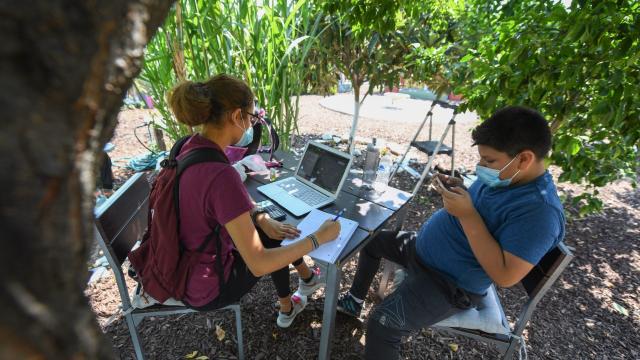According to Axios, there’s been a massive surge in demand in the U.S. for laptops, since the pandemic forced many people to work from home, and many students to attend class remotely. Now, months later and with students headed back to school there still aren’t enough laptops to go around.
Stephen Baker, a consumer tech analyst with The NPD Group, told Axios that “sales have been up 20-40 per cent every single week,” since March 2020, and there’s no sign of a slowdown.
Manufacturing efforts in China haven’t been able to keep up, either. The country just began to re-open its manufacturing plants after both a holiday and pandemic-related shut down in March 2020, so supply chain shortages are also affecting laptop components like displays and processors, which further delays how many laptops can be built.
Acer is one of the top-selling budget laptop brands in the U.S. and Acer America’s president Gregg Prendergast told Axios that there was nowhere near enough Chromebooks to satisfy the schools’ demands before students return to school in the spring — and many schools have already started the semester with 100 per cent online instruction. Prendergast said Acer has been using air freight in some circumstances due to delays at ports, which saves three weeks, but it also costs companies more to ship via air than sea. It could be months before there are enough laptops — particularly Chromebooks which many school districts favour because they are cheap — to fulfil demand.
Put simply, this could put many students who weren’t already able to get a Chromebook or another laptop to use for remote learning at an extreme disadvantage: Academically falling behind their peers because they are unable to access lessons and class materials. This particularly affects at-risk students, like youth in foster care. More than 80 per cent of students in foster care do not own a computer and typically rely on their school, family, friends, or non-profits like John Burton Advocates for Youth (JBAY), Human I-T, and TechSoup for access to one. Those non-profits are also feeling the laptop shortage, which means they can’t supply as many students with one as they would like.
Additionally, some U.S. school districts are more hesitant to loan laptops to at-risk students because of the systemic belief that they are more likely to damage or lose that laptop — which also disproportionately affects Black and Latinx students further.
A 2018 U.S. Census report showed 12.7 million households lacked a desktop or laptop computer in 2016, and noted that “households with a Black householder were the least likely to own or use a desktop or laptop, own or use a tablet, or to have a broadband subscription.” Addressing this shortage isn’t going to happen before the spring semester starts, unfortunately — and that’s on top of students who don’t already have reliable internet access.
What this means is that as companies struggle to get enough supply to meet the increased demand the already striking education gap in the U.S. will continue to grow.
